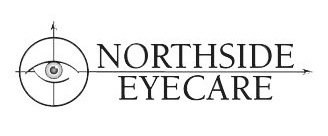Glaucoma
Glaucoma Evansville
If you’re a diabetic, you know all too well the pains and other problems caused by this disease. The same is true for those who suffer from migraine headaches or high blood pressure (hypertension). Still, there is one common thread that binds these three different groups. They all tend to live with a higher risk of having their eyesight negatively affected over time. Specifically, all three of these groups are highly susceptible to one of the most common eye problems worldwide – glaucoma.
What Is Glaucoma?
Chances are, you’ve heard of this condition or even know someone who’s suffering from it. But, what exactly is it? Put simply, it’s a disease in which your eye’s optic nerve gets damaged. This damage comes from a higher than normal amount of pressure within your eye. To be clear, your eyes need a certain amount of pressure along the optic nerve to function properly. This is accomplished with the help of a fluid called aqueous humor which flows in the front portion of the eye.
Your eyes should be healthy as long as the right amount of aqueous humor can flow properly out of the eyes. It’s when an excess amount of fluid builds up by the optic nerve that damage starts taking place because of the added pressure on the eye.
There are many different types of this condition which include:
- open angle
- angle closure
- low tension
- congenital
- and secondary
One common frustration is for someone to realize that they have this disease even though they don’t experience any real symptoms. Often times, a person will insist that their eyes are fine when, in fact, this condition is already causing gradual damage. For others, certain tell-tale signs point to glaucoma.
The following is a partial list of possible symptoms:
- Blank spots start appearing in your field of vision (typical for open angle patients)
- Severe eye pain
- Rainbow colored halos around lights
- Headache and/or nausea
Since this disease progresses gradually, it’s critical to get a checkup and proper diagnosis ASAP if you start experiencing any of these symptoms to prevent potential damage.
We now know that this condition is mainly the result of added pressure on the eye’s optic nerve. Other known causes include eye inflammation, eye injuries, and use of steroidal containing medications. Some other risk factors for developing this disease are heredity, anyone over 40, those of Asian / African heritage, and farsightedness / nearsightedness.
Although there’s no cure for this disease, there are options for prevention or at least slowing down this condition. One option is the use of eye drops which help to lower the internal eye pressure. Another option would be some type of eye surgery. Again, while neither of these options will reverse actual damage, they can help preserve whatever eyesight you have left.
If you or someone you know has glaucoma, you understand it’s not a pleasant thing to live with. Still, it’s not a death sentence either. If you’re looking to prevent this disease from happening to you, then make sure you get regular eye checkups and maintain constant communication with the doctors at Northside Eyecare. After all, high pressure should come from trying to win an Olympic gold medal – not from your eye’s optic nerve.

